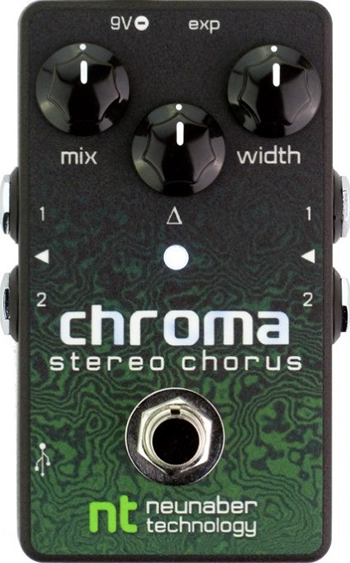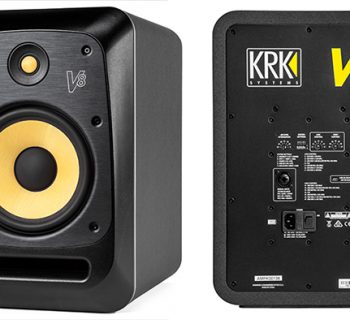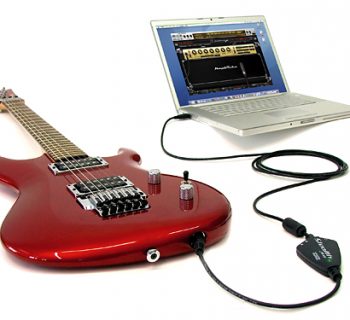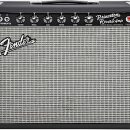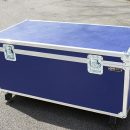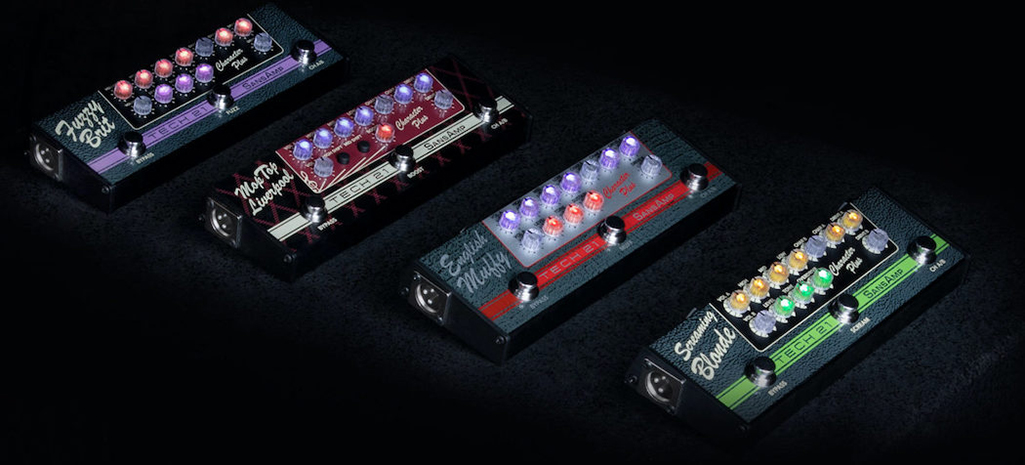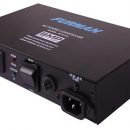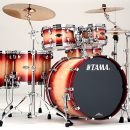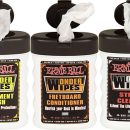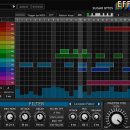 We never thought we would combine the terms “Cute” and “High Gain Molten Metal Machine” in the same sentence, but then again, we never spent quality time with the mighty, little, Engl Ironball until now.
We never thought we would combine the terms “Cute” and “High Gain Molten Metal Machine” in the same sentence, but then again, we never spent quality time with the mighty, little, Engl Ironball until now.
To be honest, calling it a “High Gain Molten Metal Machine” is a bit of a misnomer. Sure, this amp can do high gain like nobody’s business, but the Ironball is really an extremely versatile and feature-rich amp well suited to the needs of your more traditional rock loving tone-snob, wrapped up in a small package and offered at a respectable price.
| Category | Value | Rating |
| Features | 20% | |
| Usability | 25% | |
| Sound | 25% | |
| Documentation & Support | 10% | |
| Price | 20% | |
| OVERALL RATING =3.6, which earns it a WIHO Award! 3.6 stars or better: Outstanding, WIHO Award 3 stars or better: Worth considering 2 stars or better: Suited to specific needs 1 star or less: Not recommended |
||
With its multi-channel capabilities, built-in power soak, reverb, and a bevy of other features, the Ironball is a sensible solution for players requiring the convenience of a small, lightweight head but who demand big-rig functionality.
Features
The small but potent Ironball is a 2xEL-84 amp capable of delivering up to twenty watts of power. Although small, compact amps seem to be in vogue these days, and the Ironball ups the ante by offering a horde of neat features that enhance its flexibility. This two-channel amp shares across its channels a common set of tone controls (Bass, Middle, Treble, Presence), and there are Clean Gain and Lead Gain knobs as well as a Lead Volume and a global master, which adjusts the overall output for both channels. Rounding out the front panel, a Boost switch ups the gain on both channels while an adjacent switch selects the channels if you don’t have a footswitch connected.

The rear panel includes two ¼” footswitch inputs: one for Master Volume Boost/Reverb and the other for Clean/Lead Gain Boost, however, a footswitch is not included with the amp.
Rounding out the rear panel is a headphone out (8-32 ohms), a knob for reverb level, a balanced line output with cabinet simulation for running directly into a mixing board (or recording console), serial effects loop, and speaker outputs for 8-ohm or 16-ohm cabinets. Specifically, you can connect either two 8-ohm cabinets in series, or a single 16-ohm cabinet.
We also found the Ironball to be quite the little ruffian with a steel enclosure, stainless steel handle and a perforated grill designed to optimize airflow while protecting the power tubes.
However, the real standout feature of the Ironball is its four-position power soak which allows you to set the wattage to 20 watts, 5 watts, 1 watt, or even “off” for silent recording! Between this feature and the well-implemented master, a player can easily dial in the proper balance between room volume and tube saturation.

Usability
Chances are, if you are familiar with multi-channel high gain amps, you will feel right at home with the ENGL Ironball. Or putting it another way, it does not require a degree in Quantum Physics to operate! The front panels controls were intuitively laid out and the EQ section, in particular, was quite interactive once we start dialing in our tones (the owner’s manual suggests setting all tone controls to 12:00 until you get acclimated to it). Lead and Clean channels were selected via a single toggle switch or any standard TRS-equipped footswitch, while the clean gain and lead gain controls offered dynamically different gain structures at each interval for either channel.
A Lead Volume knob controlled the lead channel’s volume (while also allowing us to achieve the desired balance between the Lead and Clean channels). A Master Volume knob controlled the power amp’s output or, when activated via a footswitch, gave us access to the Master Volume Boost (M.V.B), which allowed us to dial in two different, instantly selectable volume levels (useful for a solo boost). Once all of this was dialed into our liking, the Gain Boost switched both the Lead and Clean channels into maximum overdrive by increasing the amplitude of both channels.
The rear panel contained a four-way power soak “chicken head” knob, which curiously only affected the 8-ohm power amp output. A reverb level knob was also included on the rear panel, which may seem odd to those who do not consider it a “set and leave” control, but for those of us with other ENGL or Mesa/Boogie gear, we’re happy with this arrangement. Presumably, in the case of the Ironball, the control is on the rear panel due to the amp’s super compact design.
Most of these features (save the Power Soak control) are accessible via a footswitch. As mentioned earlier, a footswitch is not included with the Ironball, which is a shame, considering the plethora of options that could be put to use with even a conventional two-function footswitch such as the ENGL Z-4, or even an inexpensive BOSS FS-6 dual footswitch (which we used to conduct our testing). Controlling the amplifier via a MIDI switcher or looper is another option, and the Owner’s Manual did a great job of explaining the various remote control options.
Sound
When it came time to test the Ironball, we broke out a virtual “Guitar Army” to put it through its paces: A Gibson Les Paul with Seymour Duncan JB/Jazz pickups, a PRS Custom 22, a custom-built, Strat-style Charvel, and a Fender Yngwie Malmsteen signature Strat!
With our Ironball plugged into a 2x12 loaded with Celestion G12H30 speakers, we first explored the Clean channel and found the amp delivered a warm and snappy tone with the gain set low and master cranked. Even at full wattage, the sound was never fatiguing, yet it was still loud enough for rehearsals or club gigs.
EL84 tubes (and the equivalent 6V6) are typically found in amps that excel at achieving that jangly “Brit Pop” sound, so it’s important for us to be clear that this amp sounds nothing like a Vox AC15, to name just one classic example. In fact, the high gain tone is pure ENGL, in that deep, dark and rich way. Not “blanket over the speaker” dark, but dark like a nice, warm cup of hot cocoa with heavy cream!
It’s also important to note that this is not the legendary “ENGL Clean” that we have talked about in reviews of amps like the incredible ENGL Powerball II or the e580 Preamp, with their studio silence and glass-like tone. The Ironball’s clean is more vintage tube amp clean, which is to say warm and with less high end than the other amp designs, and it delivers a hint of breakup. The sound is a far cry from some of the other EL84 amps we have tried, which can only be described as “bright clean.”
Turning up the gain starts to add some grindier and crunchy tones we found useful for aggressive chord work. With the boost switch engaged, the crunchy tones gave way to a more liquid, singing quality perfect for single note soloing. Even with the boost switch engaged, we never found the amp so saturated that we couldn’t clean it up with our guitar’s volume pot. In this context, the reverb sounded rich and organic (set approximately at noon) with no artificial “ping” or unnatural note decay.
In Lead mode the Ironball turns into a whole different animal! Moving over to a 2x12 loaded with Celestion Vintage 30s we instantly recognized the high-gain tones that we have come to expect from ENGL amplifiers. The tone is girthy and rich, with no fizzy or “buzzing bee” qualities. It was here that our Charvel and Les Paul guitars drove the amp into metal territory with ease. It was also an opportunity for us to use the power soak, bringing the wattage down to 5 and 1 watts, and we were impressed how the amp maintained its thick tone while keeping the volume in check. Even under high gain we were again impressed by the reverb, which added just enough wetness to the sound without sounding mushy.
Playing through our 2x12 cabinets, we thought the sound was plenty loud, but perhaps not loud enough for larger stages or bands backed by loud drummers. However, that trepidation disappeared altogether when we connected our Ironball to a 4x12 cabinet loaded with 65-watt Celestions. Perhaps the larger cab moved more air, or maybe it’s just our old ears dulling as Father Time marches on, but we now have no doubt this little amp can slice through any mix.
Documentation and Product Support
As with other ENGL amps, our Ironball came packed with an informative, multi-lingual, and well-written owner’s manual. Everything from the EQ section, power soak, channels, and optional switching options via MIDI or footswitch were explained thoroughly.
Oh, and the ENGL sticker was a nice touch as well!
Price
The ENGL Ironball (MSRP $1,499) sells for approximately $1,200 street. While this is a very good price for such a features-rich amp, we really do think the Ironball should include a basic footswitch. There are simply too many useful features (as well as one exclusively) accessible via footswitch that it is almost a bare necessity. And considering most players are looking for lunchbox-sized amps to provide a convenient, easily transportable option for times when the big rig is too much, it’s more likely players will use this amp with footswitches rather than with a switching system.
Contact Information
ENGL Amplifiers
www.englamps.de
| Evaluation Short-List |
|


